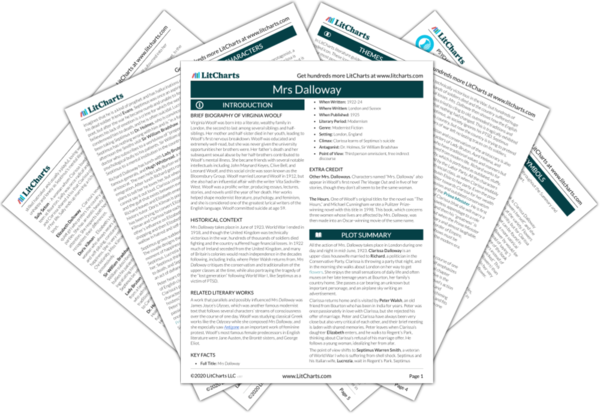Clarissa keeps walking and thinks about death. She has always felt that “it was very, very dangerous to live even one day.” She herself feels like an ordinary person, with little education but a gift for knowing people by instinct. She watches people in the street and imagines how such life will go on even after she is dead. She remembers some lines from Shakespeare’s
Cymbeline about the comforts of death: “Fear no more the heat o’ the sun / Nor the furious winter’s rages.”
